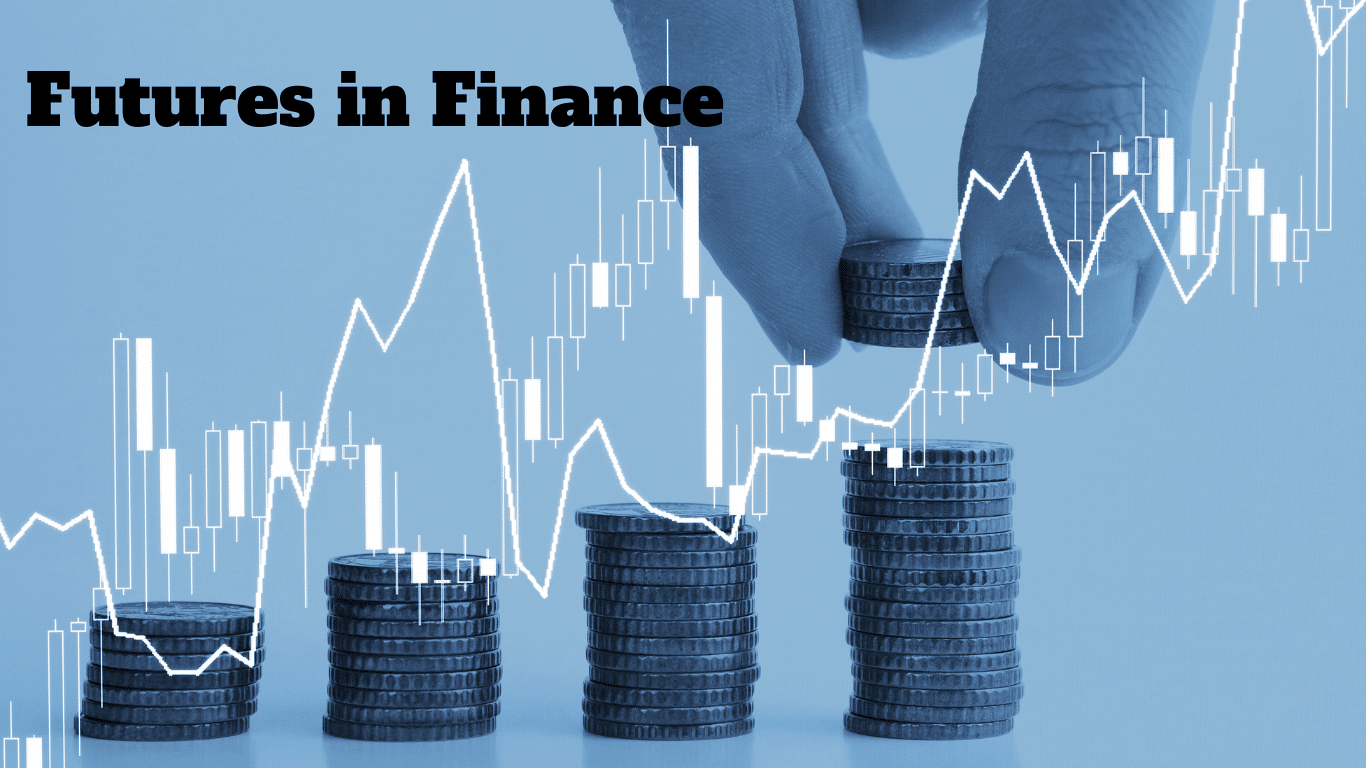Futures in finance are financial contracts that bind the buyer to acquire an item or the seller to sell an asset on a specific date at a fixed price (known as the futures price). These contracts are standardized and exchanged on well-established exchanges. They enable market players to bet on an asset’s future price movement or to hedge against prospective losses.
Uses for the future:
a) Hedging is one of the most common uses of futures. Investors can use futures to hedge against price fluctuations in the relevant asset. For example, farmers may use futures contracts to secure a price for their commodities, ensuring a continuous income independent of market fluctuations
b) Speculation: Futures markets allow traders to speculate on an asset’s price movement without owning the underlying asset. Traders can take long positions (buying futures) if they believe prices will rise or short positions (selling futures) if they think prices will fall.
c) Arbitrage: Participants in futures markets can use arbitrage methods. Arbitrageurs profit on price differences between linked contracts or marketplaces to create risk-free gains. They simultaneously purchase and sell assets or contracts to take advantage of price variations until the prices coincide.
Why trade futures?
a) Leverage: Futures contracts allow traders to control a considerable portion of the underlying asset value with a small investment referred to as a margin. This leverage increases possible benefits while raising the risk of losses.
b) Liquidity: Futures markets are often highly liquid, which means there are a lot of buyers and sellers. This liquidity guarantees that traders may readily enter and leave positions at any moment without influencing the price.
c) Price discovery: Futures markets provide information about an asset’s future price direction. Futures prices represent market players’ aggregate actions and expectations, assisting in determining fair value and price discovery.
d) Diversification: By having exposure to several asset classes, futures help investors to diversify their portfolios. They can trade futures contracts linked to commodities, currencies, stock market indices, interest rates, etc. This allows market participants to diversify their risk across many markets.
Types of futures:

a) Commodity futures: These contracts are usually based on physical commodities such as gold, oil, natural gas, wheat, coffee, and more. Commodity futures allow investors and producers to regulate the price risks associated with these necessary items.
b) Stock index futures: These contracts are linked to the performance of a certain stock market index, such as the S&P 500 or the Dow Jones Industrial Average. Stock index futures allow traders to bet on or hedge against fluctuations in the larger stock market.
b) Currency futures: Currency futures entail the exchange of one currency for another at a set future date and price. Individuals and corporations use these contracts to hedge against foreign exchange rate concerns or speculate on currency shifts.
c) Interest rate futures: Interest rate futures are based on the potential value of interest rates. Traders and investors utilize these contracts to hedge against or speculate on fluctuations in interest rates, which can have significant consequences for borrowing, lending, and investing.
Futures options are derivative contracts that provide the holder with the availability, but not the responsibility, to buy or sell a future at a specific price within a set time frame.
Futures options give traders more flexibility and risk management measures. They enable traders to limit possible losses while profiting from positive price fluctuations. Futures options are popular tools for hedging, income production, and speculating.
How are futures priced?

Futures in finance are priced depending on many factors that define their market value. The price of futures contracts, a critical feature of futures in finance, is determined by a combination of supply and demand dynamics and other market-related variables.
The following are the essential components that contribute to futures in pricing.
Underlying asset: The price of the asset upon which the futures contract is based is important in determining the futures price in finance. For example, in commodity futures, the commodity’s present and predicted future prices (e.g., oil, gold, wheat) substantially impact the futures price in finance. In commodity futures, for example, present and expected future commodity prices (e.g., oil, gold, wheat) substantially impact the prices of futures in finance.
Time to Expiration: The amount of time until a futures contract expires, influences its price in the world of finance. The time value of the contract decreases as the expiry date approaches, and the futures price in finance may closely line up with the underlying asset’s market price.
Interest Rates: Interest rates influence the pricing of futures contracts in finance, particularly those relating to interest rate futures. Higher interest rates can raise the cost of carrying, affecting the price of futures in finance.
Market Sentiment: Market participants’ expectations on the underlying asset’s future price movement can substantially impact futures pricing in the financial world. Economic data, geopolitical events, supply and demand, and market movements can all influence emotions, resulting in changes in futures prices in finance.
What is the difference between futures and futures options?
Futures and futures options are connected financial products yet have independent properties and functions. Let’s delve into the difference between futures vs options.
Futures:
Futures contracts are standard agreements to acquire or sell an underlying asset at a fixed future price and date. Futures contracts impose a responsibility on both the buyer and the seller to meet the contract requirements. They are legally binding and necessitate the underlying asset to be delivered (in physical form or financial settlement) upon contract expiration. Futures contracts provide endless profits potential and unlimited risk. The underlying asset’s price movement determines the profitability of a futures deal compared to the agreed-upon futures price. Future contracts provide flexibility to a certain extent. As they have established contract requirements, such as the underlying asset, contract size, delivery date, and delivery location.
Futures Options:
Futures options are derivative contracts providing the owner with the right, but not the duty, to purchase or sell a futures contract. In contrast to futures contracts, futures options allow the holder to exercise or let the option expire. If the holder exercises their right, the writer of the option is compelled to fulfil the contract. Futures options provide the buyer with little risk because the greatest potential loss is the price paid for the option. The buyer’s profit potential is theoretically endless, but the writer’s profit is restricted to the premium gained.
Futures options are more flexible than futures contracts. The holder can choose whether or not to exercise the option based on the price movement of the underlying futures contract. The option strike price, expiration date, and option type (American or European) can change.
How do you differentiate between commodity futures and currency futures?

Commodity futures and currency futures are two unique futures contracts used in financial markets for various purposes.
Commodity futures:
Contracts with actual commodities such as gold, oil, natural gas, agricultural products, metals, and other tangible assets. Commodity-specific supply and demand variables, such as production levels, meteorological conditions, geopolitical events, and worldwide demand, impact commodity futures prices. Commodity futures are exchanged by diverse players, including producers, consumers, speculators, and investors wanting exposure to commodity prices. Commodity futures are frequently used for hedging purposes by producers and users of commodities to control price risks connected with their operations. Speculators also trade commodities futures to profit from price changes.
Currency Futures:
Currency futures are contracts based on the value of two currencies. They reflect an agreement to purchase or sell a particular sum of one currency in exchange for another currency at a fixed price and date. Currency futures prices are determined by the current exchange rates between the two currencies involved, which are impacted by variables such as interest rates, economic data, geopolitical events, and market sentiment.
Diverse players, multinational organizations, financial institutions, speculators, investors, and individuals looking to hedge against currency exchange rate changes have traded currency futures.
Currency futures are often used by organizations engaged in international commerce to hedge foreign currency rate risks. Speculators and investors can also utilize them to profit from market volatility or for portfolio diversification.
Closing Thoughts – Futures in Finance:
In conclusion, futures in finance play a vital role in the industry. They are financial contracts that let investors hedge against price swings, speculate on asset values, and participate in arbitrage tactics. Futures trading provides various benefits, including leverage, liquidity, price discovery, and diversification. Commodity futures, stock index futures, currency futures, and interest rate futures are all futures contracts that allow traders to engage in various markets.
Futures options offer more flexibility and risk management alternatives. However, it is critical to note that trading futures involves its share of risks, and individuals should come in the future in finance with a proper understanding of the market and effective risk management measures. Futures may be essential tools for investors and traders in navigating financial markets if they have the correct information and methods.

